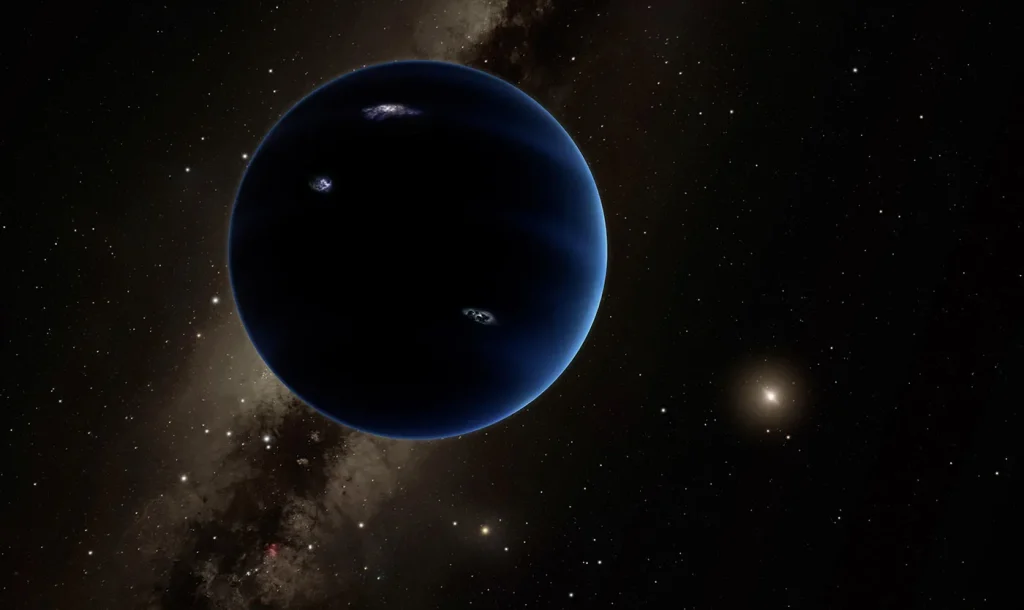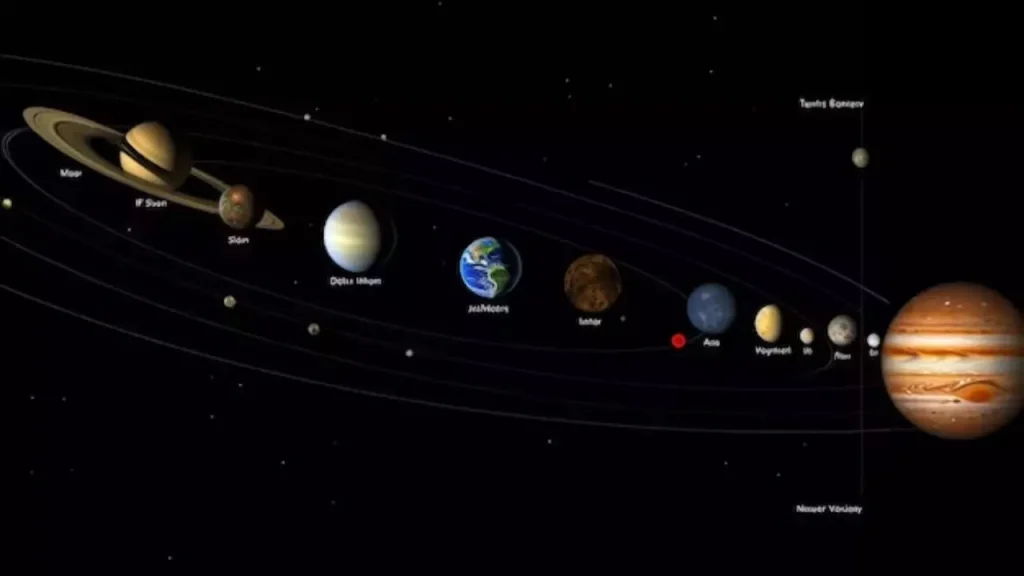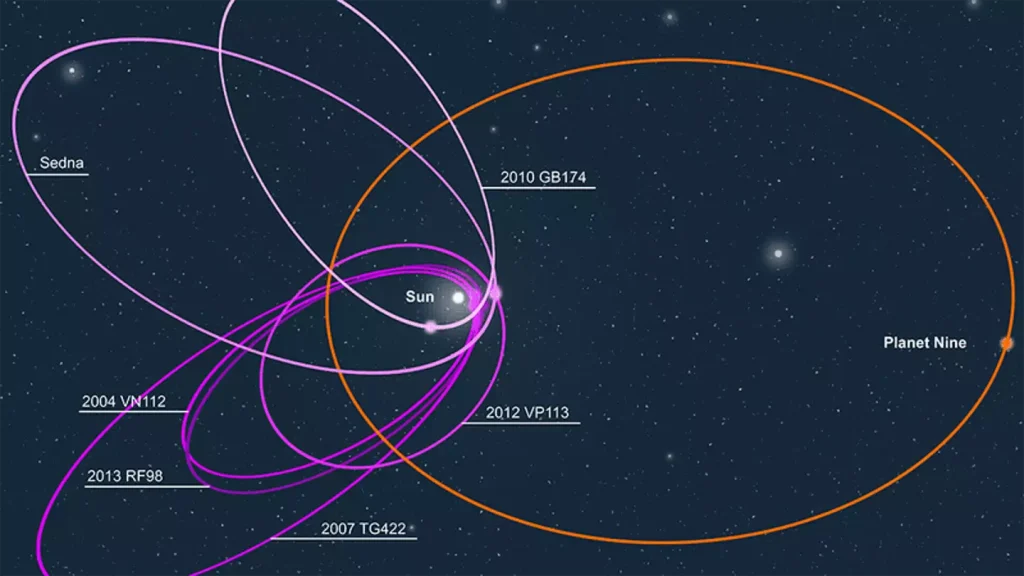For years, our solar system was known to host nine planets, but that all changed when astronomer Mike Brown made a ground breaking discovery that ultimately led to Pluto’s reclassification – Planet 9.
Known as “the man who killed Pluto,” Brown, a Caltech professor specializing in planetary astronomy, faced backlash for his discovery. His findings on another celestial object, named Eris, in the Kuiper Belt—an icy expanse beyond Neptune—sparked Pluto’s demotion in 2006. The shift downgraded Pluto from its previous planet status, a change that left many, including children, disappointed. Brown even received hate mail and unwanted calls at odd hours, showing how emotionally invested people were in Pluto’s planetary status.
Yet, a surprising turn of events may be unfolding, with Brown and other scientists believing that the Kuiper Belt could offer up a new, ninth planet in Pluto’s place. The Kuiper Belt, thought to contain remnants from the early solar system, extends to nearly 50 times the distance from the Sun to Earth and even farther into a secondary region. Pluto, which is now classified as a dwarf planet along with Eris, doesn’t dominate its orbital zone or clear it of other objects. According to the International Astronomical Union (IAU), these are criteria necessary for a body to be deemed a full-fledged planet.
The vast distances and dim light make spotting objects in the Kuiper Belt challenging. For over a decade, astronomers have been combing the belt for signs of a hidden, unseen entity they suspect exists but have not yet observed directly. Known popularly as “Planet 9” or “Planet X,” this hypothesized celestial body is believed to influence the movements of other objects within the Kuiper Belt, suggesting its presence through indirect signs.
Malena Rice, an assistant professor of astronomy at Yale University, underscores the magnitude of discovering another planet. Such a discovery could reshape how we view our solar system and other planetary systems, potentially broadening our understanding of the universe. “If we find another planet, that is a really big deal,” Rice said, emphasizing the vast potential for new insights.
While the search for Planet 9 excites the scientific community, it has sparked considerable debate as well. Theories about this hidden world are varied and sometimes contradictory. Some researchers argue that Planet 9 simply doesn’t exist. Rice notes that this contentious topic has divided experts, with passionate arguments on both sides. “Some people feel very passionately that it exists. Some people feel very passionately that it doesn’t,” she said, highlighting that such debates often signify a topic with substantial scientific intrigue.
This ongoing search could gain a decisive breakthrough soon, as an upcoming telescope capable of surveying the entire visible sky every few nights is set to become operational in late 2025. Until that happens, however, a team of researchers claims to have uncovered compelling evidence that may finally confirm Planet 9’s existence.
Historically, the idea of a ninth planet isn’t new, as astronomers have proposed the existence of planets beyond Neptune since Neptune itself was discovered in 1846. Konstantin Batygin, a planetary science professor at Caltech and a close colleague of Brown’s, remarks that since Neptune’s discovery, over 30 astronomers have proposed various types of planets that could exist beyond Neptune’s orbit.
These bodies, categorized as trans-Neptunian objects, are believed to orbit beyond Neptune. Batygin explains that, despite past inaccuracies, current evidence appears more convincing. “I never thought I would be talking about how there’s evidence for a trans-Neptunian planet, but I believe that unlike all of those previous times, in this case, we’re actually right,” he said, expressing newfound confidence in the search for a planet beyond Neptune.

Brown and Batygin are prominent advocates for Planet 9, actively searching for it since 2014. Their interest was piqued by a study conducted by Scott Sheppard, a staff scientist at the Carnegie Institution for Science, and Chadwick Trujillo, an associate professor of astronomy at Northern Arizona University. Sheppard and Trujillo were the first to observe unusual clustering in the orbits of certain known trans-Neptunian objects. They proposed that an unseen, massive planet—several times larger than Earth and over 200 times farther from the Sun than our planet—could be exerting a gravitational pull that “shepherds” these smaller objects into strange, clustered paths.
This hypothesis spurred renewed interest in Planet 9 and prompted Batygin and Brown to calculate how such a massive planet could influence the orbits of nearby objects. Their findings suggested that a large, distant body might indeed be affecting the orbits of several trans-Neptunian objects in a way that aligns with the concept of a ninth planet.
The search for Planet 9 has proven challenging, with the main difficulty being its extreme distance from the Sun. If Planet 9 exists as hypothesized, it would orbit far beyond the Kuiper Belt, potentially taking tens of thousands of years to complete a single orbit around the Sun. Its distance means that it would reflect very little sunlight, making it incredibly dim and hard to detect. The planet’s potential orbit could be so wide and elliptical that it spends most of its time far from the inner solar system, evading telescopes aimed closer to the Sun.
Scientists are hopeful that a new generation of telescopes, such as the upcoming Vera C. Rubin Observatory, will be powerful enough to detect Planet 9, if it exists. This telescope will survey the sky every few nights, capturing images of millions of distant objects. This level of scrutiny could finally allow astronomers to locate the elusive planet. In the meantime, researchers are relying on indirect evidence, such as the orbits of smaller bodies in the Kuiper Belt, to estimate Planet 9’s location and characteristics.
While some scientists are eager to embrace the theory of Planet 9, others remain skeptical. Detractors argue that the observed clustering of trans-Neptunian objects could be explained by other factors, such as observational bias or gravitational influences from known planets. They contend that without direct observation, any claims about Planet 9’s existence remain speculative.
Despite the skepticism, proponents of Planet 9 argue that the observed patterns in the Kuiper Belt strongly suggest the presence of a massive, unseen object. Batygin and Brown, along with other supporters, maintain that the only plausible explanation for the strange clustering is the gravitational pull of a distant, undiscovered planet. Their models indicate that a large body with a mass around five to ten times that of Earth could create the observed effects.
If Planet 9 is eventually confirmed, it would represent one of the most significant astronomical discoveries of the century. Not only would it restore the number of planets in our solar system to nine, but it would also offer new insights into the formation and evolution of planetary systems. Scientists believe that understanding Planet 9’s origin and composition could shed light on similar planets in other star systems, known as exoplanets. This knowledge could help scientists better understand how planetary systems form and evolve, potentially leading to breakthroughs in the study of habitable zones and the conditions necessary for life.
The discovery of Planet 9 could also have implications for our understanding of the Kuiper Belt and the early solar system. By studying this distant, icy region, scientists hope to learn more about the processes that shaped the planets and other objects in the solar system billions of years ago. The Kuiper Belt is thought to contain remnants from the solar system’s formation, making it a valuable source of information for researchers studying the origins of our cosmic neighborhood.
As the search for Planet 9 continues, astronomers are preparing for the possibility that they may be on the verge of a groundbreaking discovery. While the debate over Planet 9’s existence remains unresolved, the evidence continues to mount. For supporters like Batygin, Brown, Sheppard, and Trujillo, the quest to confirm Planet 9 is more than just a scientific pursuit; it’s a chance to expand humanity’s understanding of the universe and our place within it. The outcome of this search could change the way we think about our solar system and open up new avenues of exploration in the field of planetary science.
In the coming years, as new telescopes come online and more data becomes available, the mystery of Planet 9 may finally be solved. Whether or not the hidden planet is ever directly observed, the search has already provided valuable insights into the dynamics of our solar system and the challenges of exploring its most distant reaches.
The search for the elusive “Planet 9” has captivated astronomers and stirred public curiosity ever since Pluto’s reclassification sparked the debate on how many planets truly reside in our solar system. In 2005, astronomer Mike Brown, sometimes known as “the man who killed Pluto,” discovered Eris, a distant object in the Kuiper Belt that shares space with Pluto but does not clear its orbit. This discovery challenged Pluto’s status as a planet and led to the International Astronomical Union’s decision to reclassify it as a “dwarf planet.” The designation stripped our solar system of its ninth planet — but the possibility of a replacement has since emerged.

While some were disappointed by Pluto’s demotion, astronomers like Brown and his colleague Konstantin Batygin at Caltech have turned their attention to finding a hidden ninth planet. The Kuiper Belt, a distant ring of icy bodies beyond Neptune, might hold clues to the existence of this potential “Planet 9.” In recent years, Batygin and other researchers have produced intriguing evidence suggesting that an unseen super-Earth-sized object may influence the orbits of distant objects in the belt, sparking ongoing debate in the scientific community.
Signs of Planet 9: Orbital Clustering and Evidence
The case for Planet 9, also called “Planet X,” largely rests on its suspected gravitational effects on other objects in the Kuiper Belt. Observations reveal that certain trans-Neptunian objects (TNOs) — small icy bodies orbiting beyond Neptune — seem to have unusually clustered orbits, leading astronomers to propose that a larger, unseen object could be “shepherding” them into these paths.
Since 2014, Batygin and Brown have been actively investigating this idea. Their studies suggest that a distant, super-Earth-sized planet, about five to seven times Earth’s mass, could be influencing these orbits, though finding it has proven challenging. According to Brown, “The most visually striking evidence remains the earliest: that the most distant object(s) beyond Neptune all have orbits (that) point in one direction.” To better understand the possible existence of Planet 9, they’ve conducted multiple computer simulations and observational studies, trying to determine if an object of this mass could feasibly impact nearby bodies.
Their recent research, published in The Astrophysical Journal Letters in April, further substantiates the Planet 9 hypothesis, showing that Kuiper Belt objects appear to be influenced by a massive, hidden body exerting gravitational effects.
One alternative explanation for the clustered orbits is galactic tides — forces from distant stars in the Milky Way affecting the solar system. However, when the Caltech team ran simulations, the Planet 9 hypothesis emerged as the stronger explanation for the observed patterns. “A solar system without the hidden planet is strongly refuted by the data,” Batygin stated. He suggests that this object would have a long orbital period, ranging from 10,000 to 20,000 years, potentially making it challenging to locate.
Competing Hypotheses and the Debate Among Scientists
The existence of Planet 9 is a topic of hot debate. While many scientists support the super-Earth hypothesis, alternative theories also circulate. Some researchers, for example, speculate that if Planet 9 exists, it may resemble a “super-Pluto,” a smaller planet with characteristics more like the icy world we formerly recognized as the ninth planet.
A 2023 study led by Patryk Sofia Lykawka at Japan’s Kindai University proposes that Planet 9 may indeed be a smaller, icy “super-Pluto” with a mass between 1.5 to 3 times that of Earth. Lykawka believes this hypothetical planet would have significant internal energy, possibly enough to support subsurface oceans. This would place it in a distinctly different orbit than the known planets, even more inclined than Pluto’s.
Still, other hypotheses diverge even further. Some astronomers have floated the idea of a captured primordial black hole or the need for modified gravity models as alternative explanations for the observed behavior of distant Kuiper Belt objects. But Yale University astronomer Malena Rice cautions against embracing overly complex solutions. She prefers Occam’s razor — the principle that the simplest explanation is usually the correct one. Rice believes that an unknown, hidden planet is a more straightforward solution than alternative explanations, especially since our solar system already includes several large planets.
“The simplest idea is that it’s just another planet within the same system,” Rice says. She and other researchers continue to advocate for further observations of trans-Neptunian objects (TNOs) to verify whether their unusual orbits are statistically significant.
Challenges in Proving the Existence of Planet 9
The search for Planet 9 is complicated by observational biases and a limited dataset of known TNOs. University of Arizona planetary scientist Renu Malhotra highlights the challenge: “We observe only the brightest ones, and only a tiny fraction of even those, because we observe them when they are at their closest approach to the sun.” With only about a dozen reliably observed TNOs, astronomers are constrained by small-number statistics, which complicates efforts to confirm the unusual clustering of orbits.
Scott Sheppard, an astronomer with the Carnegie Institution for Science, agrees that more observations are needed to draw firm conclusions. Sheppard co-authored a 2014 study that initially inspired Batygin and Brown’s Planet 9 research, yet he remains cautious. “Having several tens of these objects would allow us to reliably determine if they are truly clustered in space or not,” Sheppard notes, though he admits that such objects are rarer than initially expected. Currently, the low numbers mean that even the most compelling evidence for Planet 9 remains statistically inconclusive.

This scarcity of TNO data fuels debate within the scientific community. While some researchers push aggressively for the Planet 9 theory, others like Malhotra advocate for a more measured approach. “Some scientists are more aggressive about their science, while others are more measured,” she observes. The heated discourse reflects the unique position Planet 9 holds within astronomy — as a theory with potentially transformative implications, it has naturally attracted passionate opinions on both sides.
New Tools and Future Hopes in the Planet 9 Search
Despite the challenges, astronomers remain hopeful. New technologies on the horizon could offer the breakthrough needed to settle the Planet 9 debate. In late 2025, the Vera C. Rubin Observatory in Chile is expected to start operations. Featuring one of the world’s most powerful digital cameras, the Rubin Observatory will be capable of surveying the entire visible sky every few nights, allowing astronomers to gather data at an unprecedented scale. The observatory’s capabilities could either confirm the existence of Planet 9 or definitively rule it out.
“This is a next-generation telescope that will search the entire available sky every few days,” Batygin explains. If Planet 9 exists, the observatory will have the tools to find it directly. Even if it doesn’t locate Planet 9, the Rubin Observatory’s data should be sufficient to verify or refute the statistical patterns used to hypothesize Planet 9 in the first place. Rice emphasizes that Rubin’s advanced technology will provide a crucial test for the Planet 9 hypothesis, potentially reshaping our understanding of the Kuiper Belt and the outer solar system.
The potential discovery of Planet 9 would be significant for several reasons. Super-Earths, like the proposed Planet 9, are among the most common types of planets observed around other stars but are absent from our solar system’s current lineup. Discovering one would offer an extraordinary opportunity to study this class of planets up close. This breakthrough could help researchers understand the formation of planetary systems and provide insights into the nature of distant exoplanets.
What if Planet 9 Doesn’t Exist?
As the search intensifies, it’s important to consider the possibility that Planet 9 might not exist at all. If the Rubin Observatory or other projects ultimately reveal no such planet, the field would still benefit from the information. “Not even knowing the number of planets in our own solar system is very humbling,” Rice admits. Knowing either way would help researchers refine their models of the solar system, whether they confirm Planet 9’s existence or revise theories about Kuiper Belt dynamics.
In any case, the search for Planet 9 exemplifies the dynamic nature of scientific exploration. The notion that there might still be undiscovered planets in our solar system is both surprising and humbling, reminding us that the universe continually invites us to question and explore.




